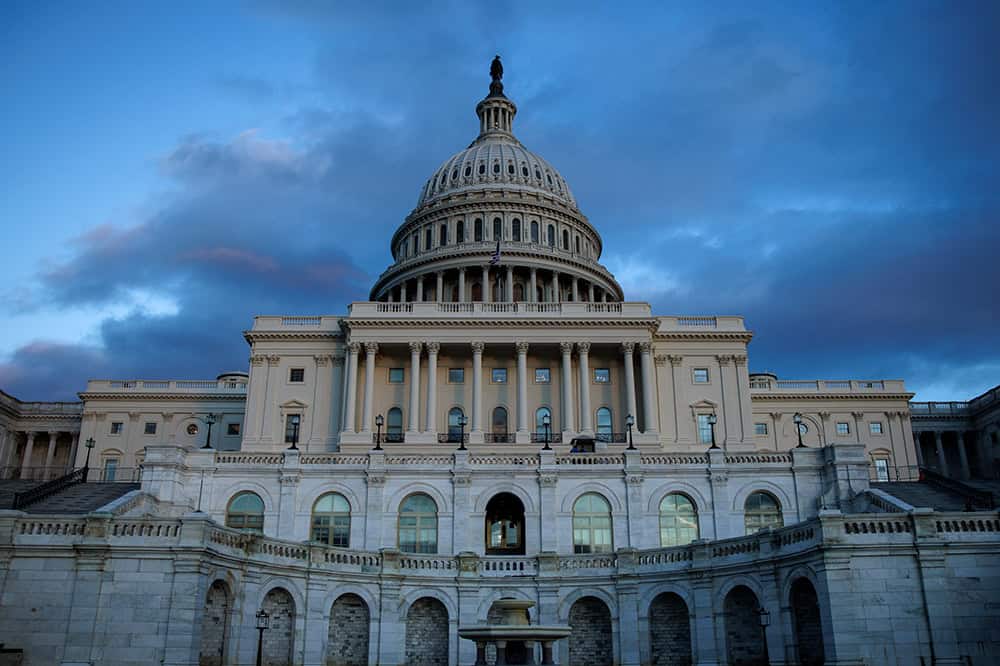At $36 trillion and rising, the national debt threatens America’s economic future. Here are the top 10 facts that explain why the national debt matters.
- Trillion dollar deficits are now the norm. The Congressional Budget Office (CBO) projects that the U.S. government will run trillion-dollar deficits over the next decade, resulting in a cumulative deficit of $21.8 trillion between 2026 and 2035.
- Interest costs are growing rapidly. Interest costs were $881 billion in 2024 and are projected to rise to $1.8 trillion by 2035. In 2024 alone, the United States spent more on net interest costs than it did on any federal program other than Social Security.
- Key investments in our future are at a risk. Higher interest costs could crowd out important public investments that can fuel economic growth — priority areas such as education, research & development, and infrastructure. A nation saddled with debt will have less to invest in its own future.
- Rising debt means fewer economic opportunities for Americans. Rising debt reduces business investment and slows economic growth. It also can lead to increases in interest rates and inflation as well as erosion of confidence in the U.S. dollar. The federal government should not allow budget imbalances to harm the economy and families across the country.
- Less flexibility to respond to crises. On its current path, the United States is at greater risk of a fiscal crisis, and high amounts of debt could leave policymakers with much less flexibility to deal with unexpected events. If the country faces a major recession or health crisis, it will be more difficult to recover.
- Protecting the essential safety net. The unsustainable fiscal path threatens the safety net and the most vulnerable in American society. If the government does not have sufficient resources, essential programs like Medicaid and Social Security could be put in jeopardy.
- A solid fiscal foundation leads to economic growth. A solid fiscal outlook provides a foundation for a growing, thriving economy. Putting the nation on a sustainable fiscal path creates a positive environment for growth, opportunity, and prosperity. With a strong fiscal foundation, the United States will have increased access to capital, more resources for private and public investments, improved consumer and business confidence, and a stronger safety net.
- The national debt is a bipartisan priority for Americans. Nearly three out of every four voters agree that the national debt should be a top priority for lawmakers.
- Many solutions exist! The good news is that there are plenty of solutions from which to choose. The Peterson Foundation’s Solutions Initiative brought together policy organizations from across the political spectrum to develop long-term fiscal plans to place the nation on a strong, sustainable fiscal footing.
- The sooner we act, the easier the path. It makes sense to get started soon. According to CBO, addressing high and rising debt sooner rather than later means that smaller policy changes would be required to achieve long-term objectives. The benefits of reducing deficits sooner include a smaller accumulated debt and therefore less risk to long-term economic growth and stability. Like any problem, the sooner you start to address it, the easier it is to solve.
Addressing the national debt is an essential part of securing America’s economic future. These key fiscal and economic issues should be at the forefront of the policy conversation in Washington. Leaders should seize the opportunity to pursue reforms that will put the U.S. long-term fiscal outlook on a sustainable path.
Photo by Derek White/Getty Images for the Peter G. Peterson Foundation
Further Reading
Long-Term Budget Outlook Leaves No Room for Costly Legislation
As lawmakers consider costly legislation to extend expiring tax provisions this year, CBO’s latest projections serve as a warning that our fiscal outlook is already dangerously unsustainable.
Moody’s Warns Recent Policy Decisions Worsen U.S. Fiscal State, Maintains Negative Outlook Rating
Moody’s says that the United States is in fiscal deterioration, warning that government policy decisions in the near term could contribute to higher interest rates and worsening national debt.
National Debt Would Skyrocket Under TCJA Extension
New analysis released from the nonpartisan CBO shows deficits doubling and debt skyrocketing under a scenario where the expiring provisions of the Tax Cuts and Jobs Act were made permanent.


